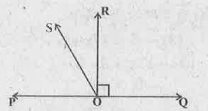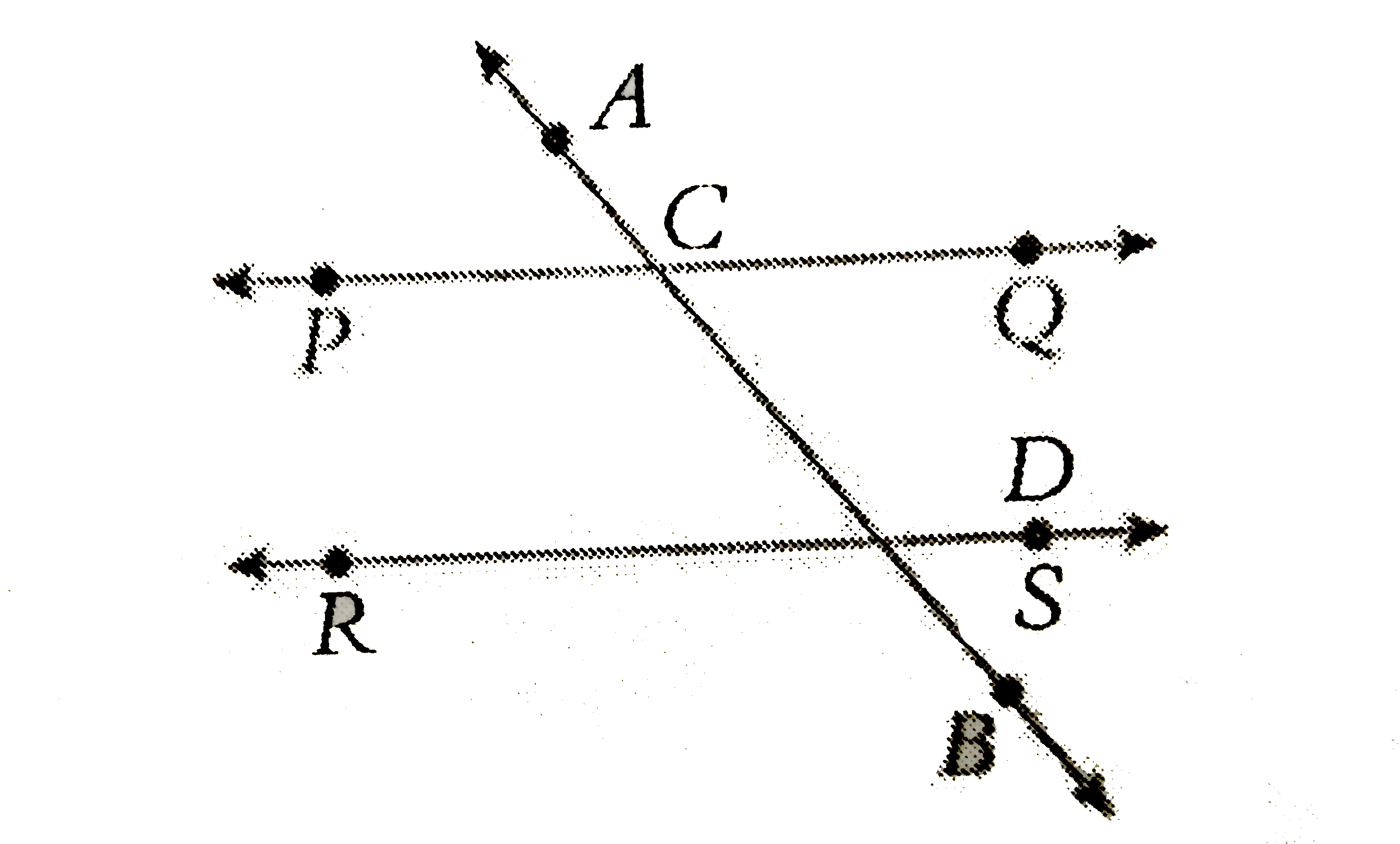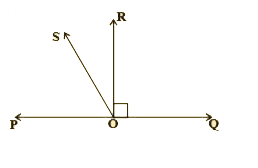కింద పటంలో ¯¯¯PQ ఒక సరళరేఖ. కిరణము ¯¯¯OR,¯¯¯PQ సరళరేఖకు లంబముగానున్నది. ¯¯¯OS అనేది ¯¯¯OP మరియు ¯¯¯OR ల మధ్యనున్న వేరొక కిరణము అయిన /_ROS = 1/2 (/_QOS - /_POS) అని నిరూపించండి.

Step by step video & image solution for కింద పటంలో bar PQ ఒక సరళరేఖ. కిరణము bar OR, bar PQ సరళరేఖకు లంబముగానున్నది. bar OS అనేది bar OP మరియు bar OR ల మధ్యనున్న వేరొక కిరణము అయిన /_ROS = 1/2 (/_QOS - /_POS) అని నిరూపించండి. by Maths experts to help you in doubts & scoring excellent marks in Class 9 exams.
Updated on:21/07/2023Topper's Solved these Questions
- సరళ రేఖలు మరియు కోణములుBOOK - VGS PUBLICATION-BRILLIANT(TELUGU)CHAPTER - సరళ రేఖలు మరియు కోణములుEXERCISE - Exercise
129 Videos
- సంభావ్యతBOOK - VGS PUBLICATION-BRILLIANT(TELUGU)CHAPTER - సంభావ్యతEXERCISE - Exercise
58 Videos
- సాంఖ్యక శాస్త్రముBOOK - VGS PUBLICATION-BRILLIANT(TELUGU)CHAPTER - సాంఖ్యక శాస్త్రముEXERCISE - Exercise
63 Videos
Similar Questions
ఇచ్చిన పటంలో కింది వానిని గుర్తించి రాయుము. ఏవైనా 6 బిందువులు

View Solutionఒక నాణెన్నీ 100 సార్లు ఎగురవేసినప్పుడు పర్యవసానాలు కింది విధంగా ఉన్నాయి. బొమ్మ : 45 సార్లు , బొరుసు : 55 సార్లు అయిన . ప్రతి పర్యవసానం యొక్క సంభావ్యత కనుక్కోండి.
View Solutionకింది పౌనఃపుణ్య విభాజనము నుండి రాశులు, వాణి పోనహపుణ్యములు గల పట్టిక తయారుచేయండి.

View SolutionLet O be the origin and let PQR be an arbitrary triangle. The point S is such that bar(OP)*bar(OQ)+bar(OR)*bar(OS)=bar(OR)*bar(OP)+bar(OQ)*bar(OS)=bar(OQ)*bar(OR)+bar(OP)*bar(OS) Then the triangle PQR has S as its
View SolutionIn the figure given below, bar(ED)||bar(AB) and bar(EF)||bar(BC) . If /_FED =40^(@) and /_ DEC =20^(@) , then the angle made by bar(BC) at the centre is
View SolutionIn the figure below, ¯¯¯¯¯¯AB∣∣∣∣¯¯¯¯¯¯FC,¯¯¯¯¯¯AE∣∣∣∣¯¯¯¯¯¯BC and ¯¯¯¯¯¯AF∣∣¯¯¯¯¯¯BD. If ∠F=x∘,∠C=γ∘,∠EAB=k∘ and ∠ABD=p∘, then which of the following options is correct ?
ltimg src="https://d10lpgp6xz60nq.cloudfront.net/physics_images/PS_MATH_VIII_C16_E05_004_Q01.png" width="80%"gt
View Solution
In the figure above, ¯¯¯¯¯¯PQand¯¯¯¯¯RS are parallel. ¯¯¯¯¯¯AC is transversal of ¯¯¯¯¯¯PQand¯¯¯¯¯RS. If ∠(ACP)=5x−70∘and∠BDR=4x+70∘, then find the value of x.
View SolutionIn the following figure, if O is the center of the circle and ¯¯¯¯¯¯AB is the diameter, then find ∠ACB.
ltimg src="https://d10lpgp6xz60nq.cloudfront.net/physics_images/PS_MATH_IX_C12_E02_009_Q01.png" width="80%"gt
View SolutionIn the following figure, ¯¯¯¯¯¯BD is produced to E. If ¯¯¯¯¯¯AD is the angle bisector of ∠A, then find the ∠BCD.
ltimg src="https://d10lpgp6xz60nq.cloudfront.net/physics_images/PS_MATH_IX_C12_E03_005_Q01.png" width="80%"gt
View SolutionIn the given figure, ¯¯¯¯¯¯AD and ¯¯¯¯¯¯BE intersect at C, such that BC = CE, ∠ABC=40∘ and ∠DEC=85∘. Find ∠BAC−∠CDE.
ltimg src="https://d10lpgp6xz60nq.cloudfront.net/physics_images/PS_MATH_IX_C12_E04_027_Q01.png" width="80%"gt
View SolutionIn the given figure, PQRS is a parallelogram. A and B are the mid-point of ¯¯¯¯¯¯PQ and ¯¯¯¯¯SR respectively. If PS=BR, then the quadrilateral ADBC is a…………………… ,
ltimg src="https://d10lpgp6xz60nq.cloudfront.net/physics_images/PS_MATH_IX_C12_E05_020_Q01.png" width="80%"gt
View SolutionIn the figure given below (not to scale), D is a point on the circle with center A and C is a point on the circle with centers B, ¯¯¯¯¯¯AD⊥¯¯¯¯¯¯BD and ¯¯¯¯¯¯BC⊥¯¯¯¯¯¯CA. Then which of the following is true?
ltimg src="https://d10lpgp6xz60nq.cloudfront.net/physics_images/PS_MATH_IX_C12_E06_004_Q01.png" width="80%"gt
View SolutionThe resultant of the three vectors ¯¯¯¯¯¯OA,¯¯¯¯¯¯OB and ¯¯¯¯¯¯OC shown in figure :-
ltimg src="https://d10lpgp6xz60nq.cloudfront.net/physics_images/ALN_PHY_R01_E02_023_Q01.png" width="80%"gt
View SolutionIn the given figure ¯¯¯¯¯¯PQ is a line. Ray ¯¯¯¯¯¯OR is perpendicular to line ¯¯¯¯¯¯PQ.¯¯¯¯¯¯OS is another ray lying between rays ¯¯¯¯¯¯OPand ¯¯¯¯¯¯OR . Prove that ∠ROS=12∠QOS−∠POS

View SolutionIn the given figure ¯¯¯¯¯¯PQ is a line. Ray ¯¯¯¯¯¯OR is perpendicular to line ¯¯¯¯¯¯PQ.¯¯¯¯¯¯OS is another ray lying between rays ¯¯¯¯¯¯OPand ¯¯¯¯¯¯OR . Prove that ∠ROS=12∠QOS−∠POS

View Solution
